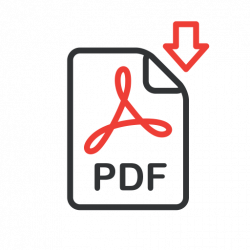 FAQ: TSCA Risk Evaluation Fees
FAQ: TSCA Risk Evaluation Fees
Updated April 6, 2020
The following frequently asked questions address fee requirements for manufacturers and importers identified in preliminary lists as fee-obligated entities for the next 20 high priority chemical substances undergoing Toxic Substances Control Act (TSCA) risk evaluations by U.S. Environmental Protection Agency (EPA).
What is the self-identification requirement for the TSCA risk evaluation fees?
Companies who have manufactured or imported any of the 20 High-Priority chemical substances in the five years preceding publication of the lists (i.e., prior to January 27, 2020) must submit notice to EPA of that fact, even if the Agency did not identify them in the preliminary lists that were published. That notice was originally due on March 27, but the due date has now been extended to May 27, 2020.
Can I choose to exit the market and not pay the fee? What options are available to certify out?
Companies may certify to EPA, if true, that they have not manufactured the chemical substance in the five-year period preceding publication of the preliminary lists. Or, they can certify that they had ceased producing or importing the substance prior to March 20, 2019 (when TSCA prioritization was initiated for these chemicals) and will not do so in the five years following the date of certification. Either certification action, if applicable, would avoid the fee obligations. Companies that have manufactured or imported a High-Priority chemical substance after March 20, 2019 cannot avoid the fee obligation, however.
What about the manufacture /import of a high-priority chemical as an impurity or byproduct? What about imported articles containing the High Priority chemical substance?
Under the final TSCA user fees rule, EPA did not to provide any exemptions for chemicals manufactured or imported as an impurity or byproduct, even if they occur in very small volumes. The rule also required that imported articles containing a High Priority chemical substance be subject to the fee obligation.
However, EPA announced in March 2020 that they will initiate a rulemaking to consider exemptions to the TSCA Fees Rule for byproducts, impurities, and imported articles, with the goal of finalizing the amendments in 2021. In the meantime, EPA has issued a “No Action Assurance” enforcement memorandum for these three categories of manufacture/import. The memo states that the Agency will not pursue enforcement action against entities in the three categories for failure to self-identify under the TSCA Fee Rule.
If my commercial activity falls under one of the three categories (byproducts, impurities, or imported articles), what action should I take in response to the self-identification notice?
If a company was identified in any of the Preliminary Lists published in January, they should certify in CDX before the close of the comment period that they fall into one of those three exemption categories to avoid identification on EPA’s final lists.
If a company already self-identified in CDX as a manufacturer for one of the three exempt categories, they have the option to change their response in CDX before the close of the comment period to be removed from the lists. EPA has modified CDX to facilitate a new appropriate response in line with the planned regulatory change.
If a company falls into one of the three exemption categories but was not identified on a preliminary list and has not yet self-identified, EPA does not expect that any further action must be taken.
EPA has posted an FAQ document for more information about its activities regarding the planned TSCA fee exemptions.
Does the statutory exclusion for non-TSCA uses apply to risk evaluation fees?
EPA’s authority under TSCA only extends to “chemical substances,” and thus TSCA cannot apply to materials that are excluded from the definition of that term. Substances not regulated under TSCA include pesticides regulated by the Federal Insecticide, Fungicide, and Rodenticide Act (FIFRA) and food, food additives, drugs, cosmetics, and devices regulated by the Food and Drug Administration (FDA). EPA has confirmed that manufacturing and importing for such uses is not subject to fees.
Is it possible that my company was incorrectly identified as subject to the fee obligation?
Yes. EPA developed the preliminary lists of manufacturers and importers subject to fees using data submitted to the Agency via the Chemical Data Reporting (CDR) Rule (2012 and 2016 reporting years) and the Toxics Release Inventory (TRI) (2012–2018 reporting years). It is possible therefore that EPA incorrectly identified companies that had ceased manufacture prior to the defined cutoff dates, or were improperly identified as a result of processing or use activities reported under TRI.
I know of other manufacturers and importers of a High-Priority chemical substance that were not identified by EPA – what can I do in such cases?
The open comment period on the preliminary lists of identified chemical manufacturers and importers affords public stakeholders the ability to comment and identify to EPA other companies who may be missing and who should share in the fee obligation.
I believe my company is listed under Confidential Business Information (CBI) in the preliminary list. Do I still need to self-identify?
Yes, companies associated with the CBI records in the preliminary lists are required to follow all the requirements in the TSCA User Fee Rule. They can continue to assert valid CBI claims in that process.
What if my company has never imported or manufactured any of the 20 High Priority substances, but plans to do so in the future?
The final user fees rule does not require late market entrants to provide notice of their activity to EPA or to pay applicable fees for risk evaluations. Therefore, companies who commence manufacture or import of a chemical substance after publication of the initial lists on January 27, 2020 should not be subject to the risk evaluation fee obligation.
I have paid a portion of the fee for one of the 20 High Priority substances. Will my company receive a proportional refund if other companies subsequently enter the market for that substance?
No. EPA has cited the impracticality in having to regularly reallocate and collect additional fees and consequently provide refunds to parties already in consortia. Therefore, companies required to pay the risk evaluation fees will not receive equitable refunds if another company decides at a later date to import or manufacture the High-Priority chemical substance.
Are discounts available to small businesses? Would my company be considered small or large?
Yes. The final TSCA user fees rule provides an 80% discount in fee amounts for small business concerns. You may certify that you are a “small business concern,” to EPA based on the employee-based thresholds for various 6-digit NAICS codes set out at 40 C.F.R. § 700.43. Depending on the applicable code, most chemical-related companies would be considered a small business concern for fee purposes if they employ no more than 500-1,250 employees.
Can my company join a chemical consortium to arrange fee payment and apportionment?
Yes. Following publication of the final lists of manufacturers and importers (see FAQ #16 below), companies have 60 days to notify the Agency of their intent to form a consortium and another 60 days total to remit payment. EPA expects that the consortium will determine how to apportion fees. In instances where small businesses elect to join a consortium with non-small businesses, EPA cannot compel the group to provide small businesses with applicable discounts. Only all-small business consortia are entitled to the prescribed lower fee rates. In some cases, it may be appropriate for a company to opt out of joining a consortium to ensure that they individually receive the 80% small business discount. In cases where manufacturers fail to voluntarily form consortia, the principal sponsor (i.e., the entity assuming primary responsibility over communication with EPA and the arrangement of fee payments) must notify EPA of the failure within the 60-day notification period. EPA at this point will consider the consortium nullified and apportion fees on an individual basis (See FAQ #13 below).
How will EPA apportion fees if companies do not form a consortium?
In such instances, EPA will count the total number of companies subject to the fee obligation for the risk evaluation, divide the total fee amount by the total number of companies, and provisionally allocate the fee equally on a per capita basis to generate a base fee. EPA will then provide all small businesses with an 80% discount from the base fee. The Agency will then calculate the total remaining fee and total number of remaining companies by subtracting out the discounted fees and the number of small businesses identified and then reallocate the remaining fee across the individual companies in equal amounts.
How should my company go about filing a report to self-identify, certify as a small business, or to certify out of the lists?
All filings must be submitted through EPA’s Central Data Exchange (CDX). EPA’s registration user guide can assist companies with the information they need to register within the CDX system. Once registered in CDX, users should be able to access the application by selecting the ‘TSCA Risk Evaluation Rule’ from the Chemical Information Submission System (CISS) landing page. Once in the application they should be able to select an ‘initial response’ submission type from the dropdown list of options. When completing the submission, users will have the opportunity to certify as to whether their company meets the definition of a small business concern, which substance they are self-identifying or certifying out for, and whether they plan to join a consortium.
What happens if my company fails to identify as a manufacturer or importer?
Failure to self-identify as a manufacturer or importer, or falsely certifying to non-manufacture or having ceased manufacture within the relevant five years, will subject companies to penalties under TSCA. EPA views each day of failed identification by a manufacturer past the payment due date as a separate event subject to penalty. The maximum statutory amount per day for the penalty is $ 40,576 (as of January 2020), to be incurred until the required fee is paid to EPA.
When will EPA publish the final lists of manufacturers and importers subject to risk evaluation fee obligations?
EPA plans to publish final lists of manufacturers and importers subject to risk evaluation fees no later than concurrently with the publication of the final scope documents for the 20 risk evaluations, which should occur sometime in June 2020. Companies will then have 60 days to notify EPA whether they intend to form a consortium to arrange fee remittance, sometime in August 2020. EPA will prepare and send invoices to the applicable manufacturers and importers who will have another 60 days to remit final payment, sometime in October 2020.
How do I make a payment after receiving an invoice?
Payment of fees can be made through the secure www.pay.gov collection portal. Companies are expected to create payment accounts in pay.gov and use one of the electronic payment methods supported including Automated Clearing House (ACH), credit card payments, debit card payments, PayPal, or Dwolla.
DISCLAIMER OF LIABILITY: This document was prepared by the Society of Chemical Manufacturers and Affiliates (SOCMA) and is disseminated for informational and educational purposes only. This information is not intended as legal guidance and does not create any legal relationship or responsibility between SOCMA and user. Nothing contained herein is intended to revoke or change the requirements or specifications of individual manufacturers or local, state and federal officials that have jurisdiction in your area. The user is responsible for assuring compliance with all applicable laws and regulations.
Categorized in: Policy, Toxic Substances Control Act

